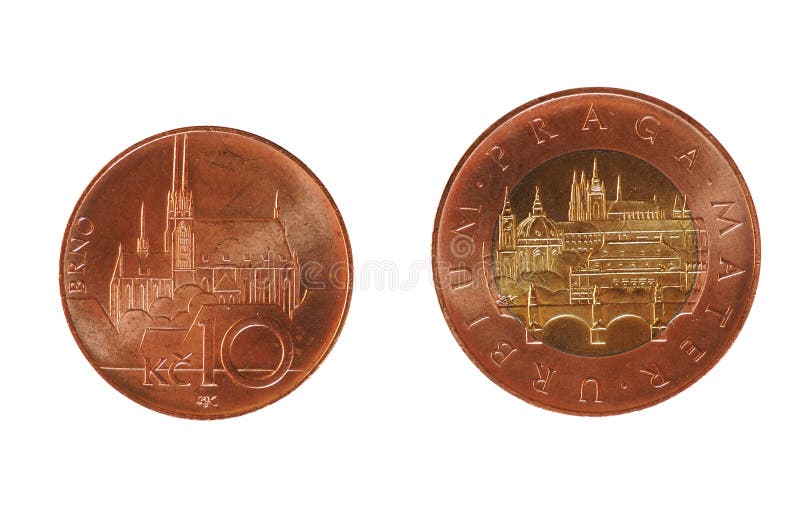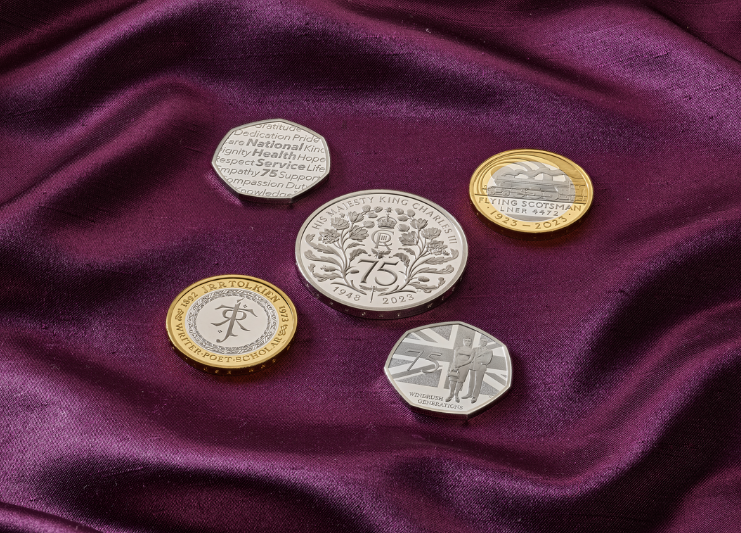Free Tips On Hand Polishing Prague Mint Coins
How And Why Do You Take A Plaster Model And Scan It To Make A 3d Digital Model Of Gold Coins Or Medals?This process makes use of specially designed equipment to digitize a maquette and capture its dimensions. This digital copy is utilized for various purposes during production.
3D Scanning: High-resolution 3D scanners are used to capture all the details and dimensions of the model. The scanners employ various techniques including laser scanning or structured light, to take precise measurements and geometrical details.
Capturing Surface Data- The scanner releases laser or light beams that hit the surface of a plaster model. The scanner records the surface information of the model by recording reflections, distortions and other effects induced by the beams.
Data Collection- As the scanner is moving over the model, it gathers an enormous amount of data points, which creates a digital representation of the model's shape as well as contours and other details.
Conversion to 3D Model - The data points collected are processed by software which reconstructs them into a 3D digital model. This model mimics the physical dimensions and characteristics of the maquette.
What are the motives behind making an electronic 3D model?
Digital 3D Models permit accurate reproduction of physical models' details and dimensions. This accuracy is essential in order to ensure that the gold medals or coins match the original model.
Making it easier to modify modelsDigital models are easily refined or modified. Designers are able to modify the design without altering the maquette made of plaster.
Compatibility With Manufacturing Processes Compatibility with Manufacturing Processes Digital 3D Models are compatible with different manufacturing processes including 3D printing and CNC machining. This facilitates the creation of dies or molds to make mass production.
Digital 3D model archives and documentation- Digital models are preserved as records of the design. Digitally stored 3D models can be utilized for future references, reproductions or for historical documentation.
By scanning models of plaster and creating 3D digital model designers and manufacturers can streamline their production processes and ensure the accuracy of reproduction and utilize advanced manufacturing technology to make gold coins and gold medals with precision and fidelity. Check out the recommended Scanning and 3D Modeling Prague Mint gold medals blog advice. including bullion dealers, george washington gold dollar coin, gold bullion gold, gold price apmex, 1 10 ounce gold coin, cost of a gold bullion bar, purchase gold coins, gold quarter dollar, silver bars for sale near me, gold and bullion and more.

How Can Laser Technology Be Utilized To Refine Gold Medals And Coins Die Surface?
Laser technology can be utilized to make master hubs that are more accurate by achieving exact details. Here's a look at the role of laser technology during this process. Surface Refinement
After initial machining the surface of a die or master hub is then polished using laser technology. It helps to smoothen out any imperfections and eliminate burrs.
Detail Enhancement-
Laser ablation, or laser engraving techniques, are used to add or enhance complex details on the master hub and die. Lasers can remove the material or etch it in a precise manner to produce fine lines, textures and complex patterns.
Microstructuring-
Laser microstructuring is the art of making of microscopic patterns or textures on the die's surface. This technique permits the creation of patterns or textures which can improve the appearance and security features of coins and medals.
Surface Hardening or Treatment
Lasers are often used to treat or harden the surface of a die, or a master hub. This procedure can enhance the endurance and wear resistance of the material.
Precision Changes
Laser technology allows precise adjustments or corrections to be made to the master hub or die, without altering the geometry of the entire. It allows for modifications to be made to the surface, addressing any discrepancies or imperfections that could affect the quality of the coins or medals.
Controlled Material Removing
Laser ablation allows for precise material removal. This is particularly useful in areas that require exact details to be defined. It provides a non-contact method of removal of materials, while preserving the integrity of surrounding area.
The use of the laser to enhance and refine the specifics on master hubs or dies can provide a higher level of precision and more precise details. Also, it improves the overall quality of the die's surface. This technology enhances the conventional machining techniques, allowing precision manipulation and improvement in the characteristics of the surface of the dies that are essential for making high-quality gold coins or awards. Read the recommended laser processing Prague Mint gold medals more examples. including platinum coins, gold american eagle price, 1933 double eagle, buy gold biscuits from bank, buy gold biscuits from bank, gold coin shops near me, 50 pesos gold coin, st gaudens double eagle, buy gold pieces, gold silver dealers and more.

Why Should Dies Be Polished Manually In Order To Achieve A Flawless Finish On Gold-Plated Coins And Awards?
It is important to hand-polish dies to ensure an even and smooth surface. The smoother the surface, the better the reproduction of fine details and intricate design features onto the coins or medals.
Improved coin or medal quality- A polished dash ensures that the struck coins and/or medals have sharp lines, clear edges and relief. The final product will be of more aesthetic appeal and appeal.
Reduced Wear & Tear- Polishing is a fantastic way to reduce friction and wear while striking. A smooth surface on the die reduces the chances of irregularities or defects on the medals struck or coins resulting from rough surfaces.
Consistency when Striking. Hand-polished dummies offer an even strike surface and ensure uniformity throughout the process of coining. Consistency in design is essential for maintaining precision, depth, or overall quality of multiple coin and medals.
Longevity of the Dies- Well-polished dies are less likely to be damaged or wear through the striking process. These dies are durable and more long-lasting, allowing them to make more coins without sacrificing quality.
Precision and Accuracy - Hand polishing allows the engraver to fine tune specific areas of dies, ensuring that the exact details are reproduced on the struck medals or coins. This accuracy is essential for the accuracy of the final product.
Quality Control- The polishing process is a part of quality control. The inspection of the die during the hand polishing process will allow the identification and correcting any flaws before striking.
Surface Finish- Polishing adds distinctive finish or texture to medals and coins, increasing their visual appeal.
Hand polishing the dies of gold coins and medals with care is an important step to make sure that the minted product will be of the highest quality precise, accurate, and pleasing to the eyes. It can have a profound impact on the final product in terms of quality, appearance, and durability. Follow the most popular hand polishing Prague Mint gold coins more info. including 1 oz gold buffalo coin, apmex gold, bullion dealers, gold bullion price, buy silver & gold, gold buffalo coin, gold & silver bullion, 1oz of gold, medal gold medal, kruger rand and more.

How Do You Put Blanks Of Gold Into Coin Presses?
In the process of minting gold blanks are loaded into coin presses and then stamped under extreme pressure to make them into pieces of gold or coins. This is a brief overview of the steps in loading blanks.
Incorporating gold-plated blanks into a feeder connected to a coin press happens after they have been prepared, inspected and graded. The feeder system ensures an ongoing supply of blanks for the coin press.
Feeding Blanks to the Press
The feeder system guides each blank into the striking area of the coin presses. This allows for precise placement of each blank to be stamped.
Alignment, Positioning and Positioning
The blanks will be aligned in the press and then placed in the room for striking making sure that they are in the right place and oriented to perform the stamping.
Moving in High Pressure
Coin presses the gold blanks using high pressure by using two dies, one stationary and another moving. The stationary coin die provides a negative image of the coin design. The moving die is used as a hammer to strike the blank while the stationary one has the positive impression.
The die moving transfers the design of the blank onto its surface with considerable force. Die's pressure prints the designs, resulting in the raised reliefs and details of the medal or coin.
Repeated Striking
To produce a more sharp image or a more distinct appearance Multiple strikes can be applied to higher quality medals and coins, particularly proof editions. Each strike refines the surface details of the coin or medal.
Collection and ejection
Once struck by the press, the coins or medals that are produced are removed from the press. They are then put in trays and containers. Quality control is performed to ensure that the designs conform to the specifications.
Post-Processing-
The style of the medal or coin could require further processing, for example, edge lettering (either edge or reeding) or post-strike treatment.
The process of stamping under extreme pressure is essential in that it imparts the desired design to the gold blanks, turning them into medals or coins that are ready for circulation, collection, or for commemoration. The process of stamping demands precision as the variations in pressure and alignment could influence the final product's quality. Check out the most popular minting Czechoslovakia gold coins more advice. including apmex gold, gold coin dealers near me, buy silver & gold, 20 dollar gold coin, cost of a gold bullion bar, liberty head nickel, gold price jm bullion, 1 oz silver price, gold quarter dollar, silver double eagle and more.
